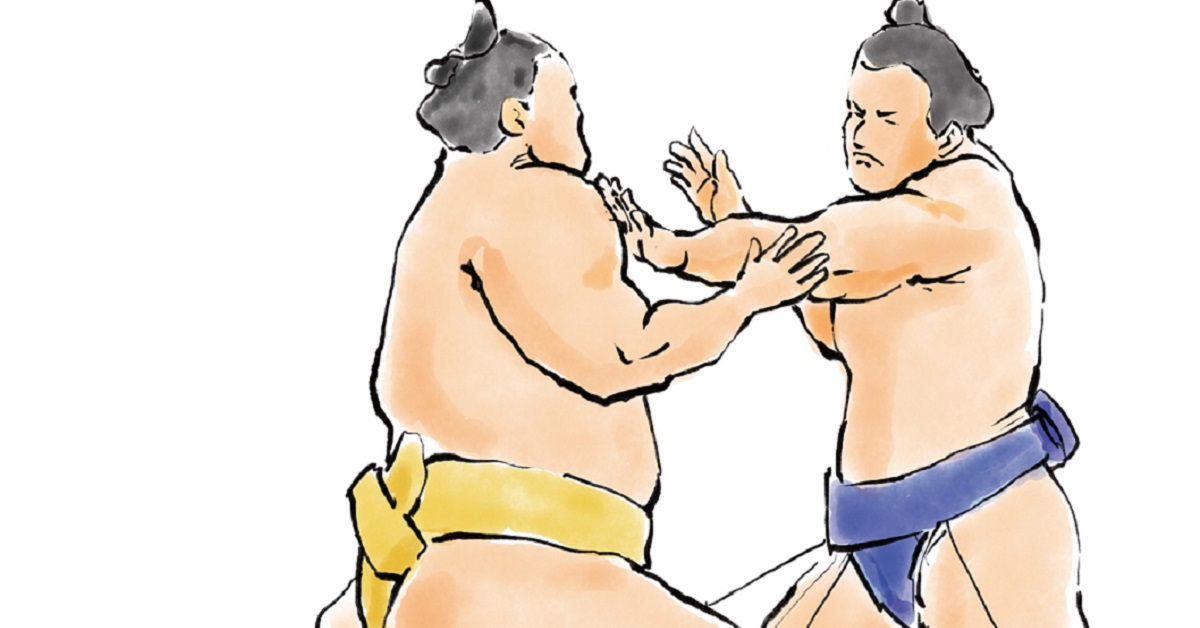In professional sumo, Jūryō is the division right above Makushita, where wrestlers become Sekitori—fully recognized professional rikishi. Promotion brings a monthly salary, private rooms, and dramatically improved living conditions, along with greater public attention. This article explores Jūryō’s role, lifestyle changes, and the requirements for promotion.
Position and Role of Jūryō
Jūryō is positioned above Makushita in the sumo ranking, with a fixed roster of 28 wrestlers. Promotion to this rank grants the title of Sekitori, marking both status and responsibility. Within the stable, a Sekitori’s role changes significantly, as they become mentors and role models for lower-ranked wrestlers.
For spectators, Jūryō is also highly appealing. While matches in the lower ranks are held early in the morning, Jūryō bouts take place in the afternoon, in front of larger audiences. This serves as an important stage for gaining experience before moving up to Makuuchi.
Promotion Requirements and Ranking Movement
Promotion to Jūryō requires excellent results in the upper Makushita ranks. Especially for those ranked between Makushita 1 and 3, a record of 6 wins and 1 loss or a perfect record greatly increases the chances of promotion. However, once promoted, a losing record can send a wrestler straight back to Makushita, so consistency is key.
General Promotion Standards
| Makushita Rank | Example Record | Promotion Likelihood |
|---|---|---|
| Makushita 1 | 6–1 or better | High |
| Makushita 2 | 7–0 | High |
| Makushita 3 | 6–1 | Possible |
Promotion is influenced not only by a wrestler’s performance but also by other wrestlers’ records and available slots, making steady performance essential.
Jūryō Benefits and Lifestyle Changes
Promotion to Jūryō transforms a wrestler’s lifestyle. The biggest change is the introduction of a monthly salary. While Makushita wrestlers receive no fixed income—only allowances—Jūryō wrestlers earn a stable salary. Living conditions also improve, as they are given private rooms.
Comparison of Makushita and Jūryō Conditions
| Aspect | Makushita | Jūryō |
|---|---|---|
| Salary | No fixed pay (allowances only) | Monthly salary |
| Room | Shared dormitory | Private room |
| Attire | Basic mawashi only | Colored mawashi, formal hakama |
| Authority over juniors | None | Can instruct lower ranks |
Additionally, they gain more opportunities for regional tours and media appearances, boosting both income and recognition.
History and Cultural Background of Jūryō
The Jūryō division has existed since the Edo period and has long been regarded as the proof of being a professional rikishi. In those times, sumo was a major public entertainment, and higher-ranked wrestlers attracted more spectators.
Today, promotion to Jūryō is still a major career milestone, celebrated by stablemates and supporters. When a foreign wrestler is promoted to Jūryō, it often makes headlines in their home country, drawing international attention.
Annual Schedule of a Jūryō Wrestler
A Jūryō wrestler competes in six tournaments per year, each lasting 15 days. In addition to tournaments, they participate in regional tours and fan events, making their yearly schedule busy.
Typical Jūryō Activities
| Period | Main Activities |
|---|---|
| Tournament months | Competing in official bouts |
| Between tournaments | Training, regional tours |
| Off-season | Training, event appearances |
During tournaments, they must maintain peak physical and mental condition, while between tournaments they continue refining skills through training and exhibition matches.
Jūryō and Foreign Wrestlers
In recent years, wrestlers from Mongolia, Georgia, the United States, and other countries have reached Jūryō. For them, this promotion not only means a higher position in the sumo world but also increased recognition in their home countries. They overcome language and cultural barriers to integrate into Japanese sumo culture while competing at a high level.
Conclusion
Jūryō is not just another rank—it is the starting point of life as a full professional rikishi. To advance to the Makuuchi division, wrestlers need both skill and consistent results. Promotion brings major improvements in lifestyle, financial stability, and social standing. For beginners and international fans, Jūryō represents an exciting entry point into the deeper world of sumo. Watching Jūryō matches is the first step to truly understanding the sport’s depth.





コメント